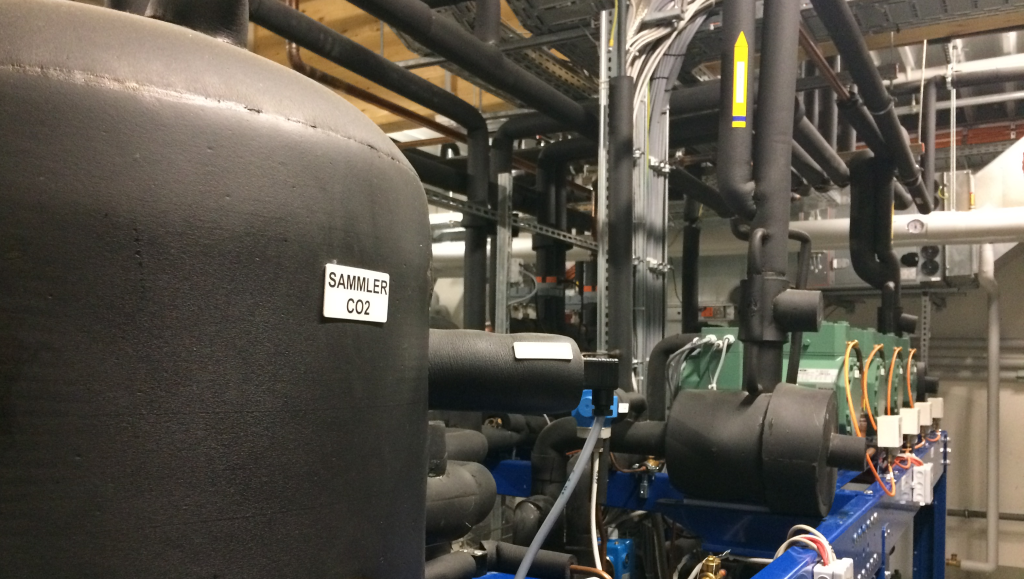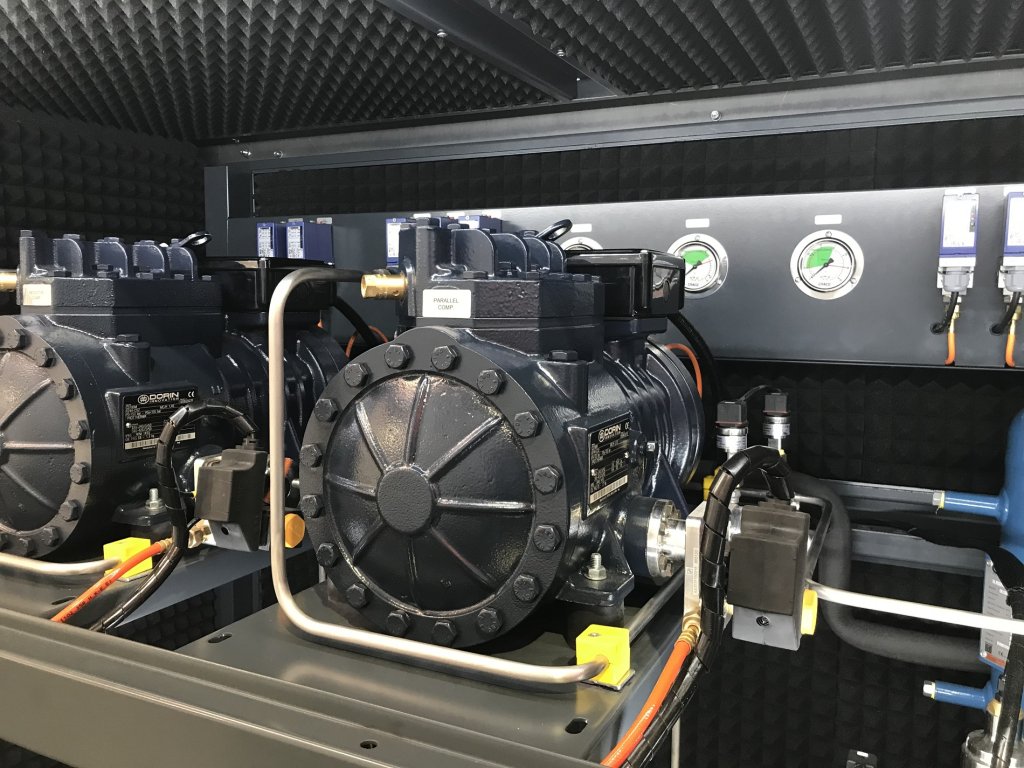Essential Insights into CO2 Refrigeration Technology
Refrigerants have evolved significantly over the years, transitioning from natural substances like ammonia and hydrocarbons to synthetic options such as chlorofluorocarbons (CFCs) and hydrofluorocarbons (HFCs). Given the environmental impact of these synthetic refrigerants, particularly their high Global Warming Potential (GWP) and Ozone Depletion Potential (ODP), there has been a renewed interest in more sustainable alternatives. Among these, carbon dioxide (CO2) has emerged as a promising option due to its minimal environmental impact and favorable thermodynamic properties. This article explores the resurgence of CO2 as a refrigerant, examining its functionality, advantages, disadvantages, and comparative performance against other refrigerants.
Table of Contents
- How CO2 Refrigeration Works
- Advantages of CO2 Refrigeration
- Disadvantages and Challenges
- Comparative Analysis with Other Refrigerants
- Real-World Case Studies
- Risks and Mitigation Strategies
- Conclusion

How CO2 Refrigeration Works
Fundamentals of Refrigeration Physics
Refrigeration operates on the principle of heat absorption and rejection through a cyclic process involving a refrigerant. The refrigerant absorbs heat from a low-temperature environment and releases it to a higher temperature environment, thereby cooling the former. This process is governed by the principles of thermodynamics, particularly the laws of energy conservation and entropy.
Detailed Explanation of CO2 Systems
CO2 refrigeration systems operate in two primary cycles: transcritical and subcritical.
- Transcritical Cycle: In this cycle, CO2 operates above its critical temperature (30.98°C/87.76°F) and pressure (73.8 bar) during part of the cycle. The system includes a gas cooler instead of a condenser, where CO2 is cooled but not condensed. This cycle is particularly useful in applications where high ambient temperatures are common.
- Subcritical Cycle: Here, CO2 remains below its critical temperature and pressure throughout the cycle. This cycle is more efficient in cooler climates and involves a traditional condenser where CO2 is condensed into a liquid.
Explore additional materials on our website: Transcritical CO2, Subcritical CO2.
Thermodynamic Properties of CO2
CO2, also known as R744, has unique thermodynamic properties that make it suitable for refrigeration. It has a high volumetric cooling capacity, excellent heat transfer properties, and operates at higher pressures compared to other refrigerants. These characteristics enable CO2 systems to be compact and efficient, particularly in commercial and industrial applications.

Advantages of CO2 Refrigeration
Environmental Benefits
CO2 is a natural refrigerant with a GWP of 1, which is significantly lower than that of HFCs and HFOs. It has zero ODP, making it an environmentally friendly option. The use of CO2 helps in reducing the overall carbon footprint of refrigeration systems, aligning with global sustainability goals.
Energy Efficiency
CO2 refrigeration systems are highly efficient, especially in cooler climates. They offer superior performance in terms of energy consumption, which translates to lower operational costs. The efficiency of CO2 systems can be further enhanced through advanced cycle modifications such as subcooling and the use of ejectors.
Safety Profile
CO2 is non-toxic and non-flammable, which enhances the safety of refrigeration systems. Unlike ammonia, which is toxic, and hydrocarbons, which are flammable, CO2 poses minimal risks to human health and safety.
Disadvantages and Challenges
High Operating Pressures
One of the primary challenges of CO2 refrigeration is its high operating pressure, which can exceed 100 bar in transcritical cycles. This necessitates robust system design and high-pressure components, leading to increased initial costs and maintenance requirements.
In an exclusive interview with Refindustry.com, Andre Patenaude, Director Solution Strategy at Copeland:
"The primary challenge with CO2 systems, without a doubt, is managing high pressures. CO2 operates at much higher pressures than traditional refrigerants. The industry has largely figured out how to handle the high side—high-pressure systems—but the challenge now lies in the low side, the liquid lines, and suction pressures. We're talking about pressures like 30-bar low-temp and 45-bar medium-temp systems. These pressures are increasing in visibility as the industry works to reduce release events.
For example, in the event of a power outage, CO2 starts absorbing heat and pressures can quickly rise beyond the system’s pressure relief value. Retailers have experienced these situations, and some are now willing to invest more in order to increase their standstill pressures, so their systems can handle these spikes without releasing refrigerant into the atmosphere. It’s about preventing those release events, especially in higher ambient temperatures."
Installation and Maintenance Costs
The installation and maintenance of CO2 systems can be costlier compared to traditional systems using HFCs or HFOs. The high-pressure components and the need for specialized training for technicians contribute to these costs.
Geographical and Application-Based Limitations
CO2 systems are more efficient in cooler climates and can face performance issues in warmer regions. This limits their applicability in certain geographical areas and necessitates the use of hybrid systems or additional cooling techniques to maintain efficiency.
Comparative Analysis with Other Refrigerants
Comparison with HFCs, HFOs, Ammonia, and Hydrocarbons
| Refrigerant | GWP | ODP | Toxicity | Flammability | Efficiency |
|---|---|---|---|---|---|
| CO2 | 1 | 0 | None | None | High |
| HFCs | High | 0 | None | None | Moderate |
| HFOs | Low | 0 | None | Moderate | Moderate |
| Ammonia | Low | 0 | High | None | High |
| Hydrocarbons | Low | 0 | None | High | High |
Regulatory Influences
International treaties such as the Montreal Protocol and national policies aimed at reducing greenhouse gas emissions have accelerated the shift towards low-GWP refrigerants like CO2. These regulations are crucial in shaping the future landscape of refrigerant choices.
Real-World Case Studies
Several industries have successfully transitioned to CO2 refrigeration systems. For instance, supermarkets in Europe have adopted CO2 systems for their refrigeration needs, achieving significant reductions in energy consumption and greenhouse gas emissions. The food processing and cold storage sectors have also seen successful implementations, demonstrating the versatility and efficiency of CO2 systems.
Commercial Refrigeration Trends
CO₂ is rapidly gaining ground in the commercial sector, particularly in the EU and US, driven by regulatory shifts and retailer climate goals. Supermarkets, food service operators, and distribution chains are transitioning from HFC systems to CO₂ due to its low GWP and energy efficiency.
According to our feature article "The CO₂ Revolution: Commercial Refrigeration Trends Reshaping EU and US Markets", major retailers like Aldi Süd, Lidl, and Walmart have accelerated their rollout of transcritical CO₂ systems across Europe and North America. Incentives, emission regulations, and new heat recovery designs are making CO₂ systems more viable even in warmer climates.
Read more: Commercial CO₂ refrigeration market trends
Industrial Refrigeration Applications
While ammonia still dominates large-scale industrial systems, CO₂ is quickly becoming a preferred alternative in small- and mid-sized cold storage and food processing facilities. The article "CO₂ Gains Ground in Industrial Refrigeration Applications" details how North America saw a 74% growth in industrial CO₂ systems in 2024.
Segmented growth is evident: CO₂ is favored in urban installations where ammonia faces regulatory hurdles, while ammonia remains the go-to for high-tonnage process plants. Regulatory frameworks in the EU and states like California and Washington are also accelerating the shift.
Read more: Industrial adoption of CO₂ refrigeration
Below are selected case studies showcasing the effectiveness and scalability of CO₂ technologies in different climate zones and applications.

1. Arneg & Basko (Italy)
A fully integrated CO₂ system was implemented in a zero-impact supermarket to manage refrigeration, heating, and hot water.
-
Replacement of HFCs with natural refrigerant
-
Full building climate control using one system
-
Waste heat recovery for energy reuse
-
Lower carbon footprint and energy consumption

2. CCR Commercial Refrigeration (Germany)
A CO₂ heat pump system was deployed in a shopping center operating efficiently even in sub-zero conditions.
-
Delivers 1.5 MW of heating and 900 kW of cooling
-
Designed for ambient temperatures down to -15°C
-
No dedicated machine room required
-
COP greater than 3.4, improving energy efficiency

3. Copeland (USA, California)
-
A CO₂ booster system with Copeland components was successfully commissioned for high ambient conditions.
-
Smooth start-up with minimal oil carry-over
-
High-efficiency operation in warm climate
-
Quiet and stable performance
-
Reliable CO₂ performance in a supercritical cycle

4. Enex & 3 Ravens Brewery (Australia)
A brewery integrated a CO₂ chiller heat pump, significantly boosting capacity while cutting energy use.
-
400% increase in production with same energy use
-
76% reduction in energy per unit produced
-
Compact and efficient chiller system
-
Alignment with sustainability goals

5. Frascold & Aircodue (Italy)
A CO₂ heat pump was applied in a railway HVAC project, achieving major environmental benefits.
-
58% reduction in CO₂ emissions
-
Efficient climate control in mobile infrastructure
-
Compact solution tailored to transport sector
-
Improved performance under variable load

7. Rivacold (Italy)
A logistics center adopted a transcritical CO₂ solution designed for high outdoor temperatures.
-
Reliable operation in warm climates
-
Designed for 130-bar pressure conditions
-
Compact and accessible system layout
-
Full integration with existing cold chain infrastructure
Want to explore all these case studies in detail?
They are featured in the special edition of Refindustry Magazine 2025 / Issue 2.Risks and Mitigation Strategies
Retrofitting Older Systems
Retrofitting older systems to accommodate CO2 can be technically challenging and costly due to the need for high-pressure components and specialized expertise. However, advancements in technology and training programs can mitigate these challenges.
Required Training and Expertise
The safe and effective installation and maintenance of CO2 systems require specialized training for technicians. Industry stakeholders must invest in training programs to build the necessary expertise and ensure the safety and efficiency of CO2 systems.
Technological Advances and Evolving Regulations
Ongoing research and development are focused on overcoming the limitations of CO2 systems, such as improving efficiency in warm climates and reducing operating pressures. Evolving regulations will continue to drive innovation and adoption of CO2 refrigeration technology.
Conclusion
CO2 has the potential to play a significant role in the future of sustainable refrigeration technology. Its environmental benefits, coupled with advances in system design and efficiency, make it a compelling choice for various applications. Industry stakeholders are encouraged to consider the holistic benefits and challenges of adopting CO2 systems, ensuring a sustainable and efficient future for refrigeration technology.
As the refrigeration sector diversifies, it's clear that CO₂'s role is no longer confined to niche markets. Its adoption in both commercial and industrial settings illustrates its flexibility, with supermarket chains and industrial warehouses alike leveraging CO₂ to meet both efficiency and climate targets.
-
For an in-depth look at retail and grocery applications, read our article on commercial CO₂ trends.
-
To explore the industrial evolution, read: CO₂ in industrial refrigeration.




